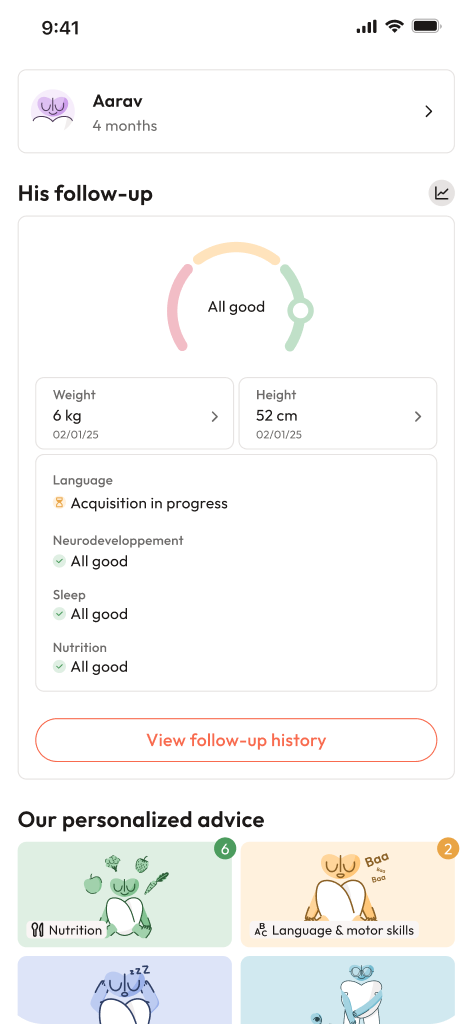Welcoming a new baby into the world—few experiences summon such a vivid mix of hope, uncertainty, excitement, and apprehension. The term Labor duration sits at the heart of these emotions. How long will it take? Will it be fast, slow, or utterly unpredictable? The truth is, parents grapple with a mosaic of timelines, stories, and anxieties—hearing 24 hours from one side, 3 hours from another, and so many opinions in between. If you’ve ever wondered: “What’s normal?” or “What can I expect for my own labor duration?” you are not alone in these thoughts.
Let’s peel back the layers: this journey involves science, experience, and nuance. Factors like whether it’s the first or a later birth, how the contractions behave, the position of the baby, and even the support in the room can shape your experience. Here, the focus isn’t just on numbers, but on practical cues, evidence-based advice, and acknowledgment of each parent’s unique landscape—so you’re better equipped for what’s ahead.
Key benchmarks and timelines: A closer look at labor duration
Labor duration is as individual as a fingerprint. Still, certain patterns and averages can offer a valuable starting point—guiding but not dictating expectations.
- First-time birth (nulliparous): The active phase commonly stretches anywhere between 4 to 8 hours, though for countless parents, especially when it’s the first encounter, active labor might stretch beyond 12 hours or more. Impossible to give a stopwatch, yet it’s not rare for labor duration to unfold gradually.
- Subsequent births (multiparous): Here, the body often remembers the path; active labor duration typically condenses into 2–5 hours. Many times, the process feels decidedly faster compared to the inaugural journey.
- Second stage benchmarks (pushing): For first births—up to around 3 hours can be quite standard, especially with an epidural, but many finish in 30–90 minutes. For those who’ve given birth before, pushing may last anywhere from 5 to 60 minutes, occasionally up to 2 hours if there’s strong pain relief.
Notice how no two stories mirror each other? That’s the unpredictable cadence of labor duration.
Definitions matter: Some obstetricians define labor duration as “from the start of regular, progressive contractions until the moment your baby cries.” Others extend the count through placenta delivery and immediate postpartum monitoring. This variation shapes the numbers you’ll see in research, so always check where the clock starts and stops.
The rhythm of labor: Stages, phases, and what shapes their duration
First stage — latent phase (early labor)
Early labor can be a marathon of patience—contractions gather pace, the cervix softens, and opens up to about 5 or 6 cm. The labor duration for this phase can be dramatically variable:
- First birth: Often stretches from 6 hours to a staggering 20 hours, occasionally even longer. There are parents who spend a whole day feeling “almost there.”
- Subsequent births: Generally, 4 to 12 hours suffices, sometimes less.
How to cope? Rest. Hydrate. Maybe take a warm shower. Use a birthing ball or just focus on slow breathing. The trick? A calm, reassuring environment—partners and midwives can make a world of difference (and support healthy oxytocin levels).
When to go in or call your care team? The “5-1-1” rule: contractions every 5 minutes, lasting 1 minute, for 1 hour. But if your water breaks, if there’s bleeding, or you’re feeling too overwhelmed—do not wait.
What makes early labor longer or shorter?
- Cervical ripeness is key—a soft, effaced cervix welcomes faster labor.
- Maternal rest, hydration, nutrition, and emotional atmosphere contribute massively.
- Spontaneous labor typically moves faster than induced labor when the cervix isn’t ready.
First stage — active phase
The “active” part truly starts shimmering near 6 cm dilation (modern research has nudged this threshold upwards from the old 4 cm benchmark). Labor duration here often accelerates, but pace is not uniform—some might dilate faster, others slower, and no single tempo fits all.
What can influence the journey?
- Fetal position: babies facing “occiput anterior” generally descend efficiently; those facing another way may prompt a longer labor duration.
- Labor interventions—like amniotomy (breaking the water) or oxytocin (to boost contractions)—can adjust the length, but decisions always balance benefits and safety.
- Mobility, upright positions, and how contractions are managed make visible differences.
Second stage — pushing to birth
Here comes the crescendo—the urge to push and the moment of birth. Duration hinges on experience, pain relief, baby’s position, and sometimes just luck.
- First birth: Most finish in 30–90 minutes; up to 2 hours without an epidural or 3 hours with it is common.
- Subsequent births: Often just 5–60 minutes; up to 1 hour (without epidural) or 2 hours (with epidural) are usual boundaries.
Pushing can be led by instinct or coached by the team. Sometimes, with a dense epidural, “laboring down” (waiting for descent before active pushing) is encouraged. Upright or squatting positions may help the process along.
When progress stalls? Clinical teams weigh the need for assisted delivery—forceps or vacuum extraction—always focusing on maternal and baby well-being.
Third stage — placenta delivery
The finish line after birth: delivering the placenta, usually within 5–30 minutes. Active management—routine oxytocin and controlled cord traction—often reduces bleeding risks and speeds recovery.
Fourth stage — the first two hours postpartum
This little window is about healing, bonding, and early monitoring of both parent and baby. While labor duration is technically concluded, the next few hours remain medically busy—keeping everything stable and safe.
What influences labor duration? An intricate web of factors
Maternal factors
- Parity: First or subsequent birth—the uterus “learns” over time.
- Age, BMI, pelvic anatomy, hydration, overall health, and even psychological comfort matter. Anxiety and stress can lengthen labor duration by dampening natural oxytocin and slowing contractions.
- Continuous support from empathetic professionals or loved ones isn’t just nice—it’s proven to shorten labor duration and enhance satisfaction.
Fetal factors
- Size, head circumference, position (anterior, posterior, breech, etc.)—all determine how smoothly baby navigates the pelvis.
- Station and descent: The baby’s movement downwards in the pelvis is closely watched.
Labor management and environment
- Spontaneous labor vs. induction: When labor is induced with an “unripe” cervix, expect a longer labor duration—sometimes 24–48 hours for ripening before active labor can start.
- Interventions—amniotomy, oxytocin augmentation, epidural timing— affect the pace.
- Birth setting, light levels, and companionship all shape how parents experience and progress through labor duration.
Measuring and tracking progress: Beyond just time
Medical teams keep a keen eye on the frequency, intensity, and duration of contractions—and track cervical dilation, effacement, position, and fetal station. Tools like the partograph (a detailed labor timeline) help visualize patterns.
- The classic “1 cm per hour” rule? Outdated. Labor duration can fluctuate unpredictably.
- Trends matter most—steady progress, well-being, and adapting as needed.
When to go to the hospital or call: Practical cues, not just clocks
- 5-1-1 rule: contractions every 5 minutes, lasting 1 minute, for at least an hour—traditional advice for many, but personalize based on your story.
- Membrane rupture, bleeding, reduced fetal movement, fever, or an overwhelming sense of being unable to cope should prompt swifter action.
Special situations—previous quick births, planned VBAC, or antibiotic need for GBS—demand individualized timing and alertness.
Serious red flags (heavy bleeding, greenish amniotic fluid, fever, signs of preeclampsia) always call for immediate evaluation.
Prolonged and precipitous labor: Thresholds, risks, and approaches
Prolonged labor duration sparks concern when there’s no cervical change for 4 (with good contractions) or 6 hours (with weaker contractions). Individual assessment always trumps rigid time-limits.
The “5 Ps” can clarify what’s happening:
- Power (strength of contractions)
- Passenger (the baby)
- Passage (pelvis and tissues)
- Psyche (mental/emotional state)
- Provider/practices (medical interventions and protocols)
Risks for parent: exhaustion, infection risk, postpartum bleeding, increased chance of severe tears. For baby: possible infection or, in rare cases, low oxygen that may require NICU help.
Management: Non-medical strategies—position changes, warm water, upright posture, rest early on—are often used first. Medical steps—like artificial rupture of membranes or adjusting oxytocin—are carefully considered if progress stalls.
Precipitous labor (everything happens in about 3 hours or less): More frequent for those who’ve given birth before or after a previous rapid delivery. Planning ahead and alerting your team early are practical essentials.
Strategies to encourage healthy, efficient labor duration
- Prenatal preparation: Childbirth classes, pelvic exercises, aerobic fitness, and anxiety-reduction tips can potentially ease the labor journey.
- Early labor at home: Hydrate, rest, stay calm, snack lightly, use warmth or massage.
- During active labor: Change positions, use a birthing ball (especially with an epidural), empty the bladder, and seek constant, empathetic support.
- On arrival at the hospital, medical teams assess contractions, dilation, and both parent and baby’s well-being—adapting monitoring methods (continuous or intermittent) to the context.
- Pain management: Modern epidurals have minimal effects on early labor, though they may lengthen pushing slightly. Nitrous oxide and systemic analgesics play supporting roles. Non-pharmacological methods—water, massage, breathing—are widely used.
Special scenarios that influence labor duration
- Induced labor, especially with an unripe cervix: Prepare for a longer, multi-step process with ripening agents (like a balloon catheter) and oxytocin.
- VBAC (vaginal birth after cesarean): Timelines align with other labors but demand close observation for safety.
- Twins, breech babies, multiples: Management and duration vary—sometimes a trial of vaginal birth is reasonable, but continuous team presence is standard.
- Post-term, PROM (premature rupture of membranes), chorioamnionitis: Each situation, whether overdue, with broken waters, or maternal fever, prompts tailored interventions—safety always the focus.
Cesarean birth: The operation lasts about 30–60 minutes, with extra time for anesthetic setup and recovery. Early skin-to-skin is encouraged when feasible.
Birth settings and diversity in labor duration
- Home births and birth centers: For well-selected, low-risk parents, labor may feel more fluid—no travel interruption, gentle environment—but clear safety plans and transfer criteria are always in place.
- International differences: Epidural rates, induction policies, and protocols for oxytocin or length tolerance can produce a spectrum of reported labor durations. However, global guidance aligns on monitoring progress, individualizing interventions, and supporting physiologic labor where safe.
Common myths confronted with evidence
- “Everyone should dilate 1 cm per hour”—a persistent but simplistic picture. Real-life labor duration dances to its own rhythm.
- “All first labors take 24 hours”—for some, perhaps, but many finish far sooner, and a significant number take longer.
- “Epidurals always slow labor down massively”—modern low-dose techniques generally exert only mild influence over labor duration, especially in the first stage.
Folklore remedies like castor oil or spicy food? Science shows little benefit and sometimes uncomfortable side effects.
Key takeaways
Labor duration refuses to fit a strict mould. Wide variations exist, and what’s “normal” often bends with circumstances and context. The beloved “1 cm/hour” is only an average, not a precise template for every birth. What counts most is steady progress, adaptability, the well-being of parent and child—and a healthcare team willing to individualize. Many positive influences (mobility, support, hydration, optimal environments, and appropriately timed interventions) can help labor duration feel more manageable and meaningful.
Seeking reassurance or individually tailored advice? There are abundant resources and medical professionals available to support you. For personalized guidance and free child health questionnaires, download the Heloa app.
Questions Parents Ask
How can I tell real labor from false labor (Braxton Hicks)?
It’s natural to feel confused—many parents do. True labor contractions gradually become regular, stronger, and get closer together. They usually don’t go away with resting, a warm bath, or moving around. Braxton Hicks contractions, on the other hand, are typically irregular, milder, and might vanish if you drink water or relax. Another sign of true labor: persistent lower back pain, change in vaginal discharge (sometimes called “bloody show”), or your water breaking. Undecided? Ring up your care team for clarity—whether for a quick check or direct advice.
What are signs that labor is progressing quickly (precipitous labor) and what should I do?
When labor advances at lightning speed, contractions can arrive in a rush, grow intensely powerful, and you might suddenly feel a strong urge to push—sometimes with little warning. Stay composed (yes, easier said than done!). Ring your provider or emergency services promptly, check your route to the birthing center, and be ready for home-birth instructions if it comes to that. If the baby arrives before help, keep the little one warm—skin-to-skin contact is ideal—until healthcare support arrives. Feeling apprehensive is absolutely understandable; the best action is to reach out for professional guidance without delay.
How long does it take to dilate from 1 cm to 10 cm?
There’s no one-size-fits-all answer—dilation speed in labor duration can differ tremendously. Early dilation (1–4 cm) sometimes drags on, particularly in a first pregnancy. Many people notice speed picking up from 6 cm onwards, as the active phase begins. For some, the journey from 1 to 10 cm races by in a handful of hours; others need much longer. Instead of clock-watching, focus on steady progress, your comfort, and baby’s heartbeat. If you need to keep track, monitoring contraction timing and sharing changes with your team is the best route for peace of mind and tailored advice.

Further reading :









